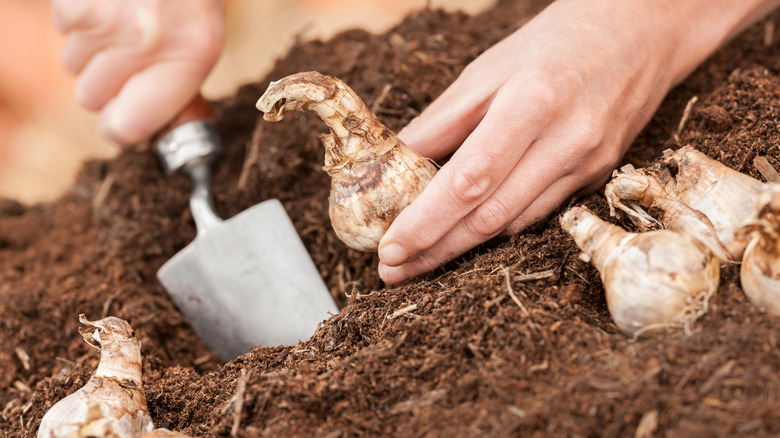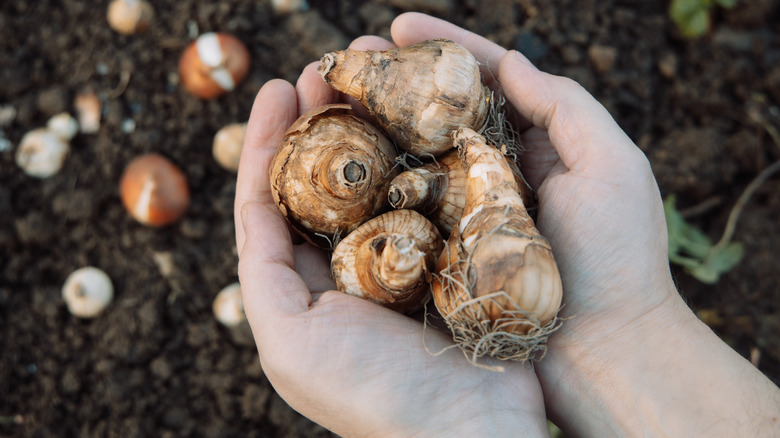Why You Should Plant Daffodil Bulbs In Early Fall, According To Our Pro Gardener
Planting daffodil bulbs in autumn is a favorite activity for many gardeners like me. Nothing says "spring has arrived" as beautifully as colorful daffodils in bloom. Once planted, daffodils will increase and bring years of perennial beauty. However, proper planting techniques are important to ensure these spring-blooming bulbs will thrive. They like a well-drained soil, bloom in partial to full sun, and can be planted near other perennials like hostas, which start pushing through in late spring once daffodils start to fade. But one crucial step to observe is planting them at the right time. In cold regions, daffodil bulbs should go in the ground in early autumn to avoid freezing.
In warmer growing areas, starting at USDA zone 6 and above, daffodil bulbs can be planted as late as November. However, gardeners should check on average hard frost times for their region as a protective measure, and make sure they plant daffodils at least six weeks beforehand. Normally, the ground doesn't freeze at the first hard frost, but once the ground gets colder, daffodils won't be able to form roots as easily, and it's good for them to put out some roots before they go dormant for the winter.
When a daffodil's roots begin forming, the walls of the bulb become more permeable, making them less likely to freeze. A frozen daffodil bulb is more likely to rot, and a rotten daffodil bulb won't produce any flowers. As a professional gardener, I try to plan on ordering or purchasing daffodil bulbs by late August so I can be ready for planting in September.
Plant six weeks before frost
If you can plant your daffodils six weeks before the first frost date for your area, that's best, but allowing at least a month is probably acceptable. You can use this handy page from the Old Farmers Almanac to find out average frost dates for your area. With climate change causing some unexpected shifting of weather patterns, including affecting average seasonal temperatures, it can be hard to predict when the "usual" seasonal changes might occur.
In addition, there are other planting tips to help protect your bulbs. Daffodils need to be planted both earlier and deeper than most other spring bulbs. You can use a bulb planter or shovel, but be sure to plant at a depth of 7 to 8 inches. Be sure the soil is well-draining, and choose a spot that doesn't stay too wet to help prevent the soil from freezing around your bulbs. Daffodils planted beneath trees will do fine if they emerge before the trees leaf out in spring, allowing them ample sun exposure.
Your daffodils will eventually form adjacent bulbs and grow into a clump, and over time, you'll want to divide the clump every three years or so. Give your daffodils a few inches of space from other spring-blooming perennials, keeping in mind the different bloom times. You can water your freshly planted daffodil bulbs lightly to help them get established, but avoid planting just before a heavy rainfall.

